Thermoelectric Generation in Hybrid Electric Vehicles
Abstract
1. Introduction
2. Literature
2.1. Hybrid Electric Vehicle Configuration
2.1.1. Series Hybrid Configuration
2.1.2. Parallel Hybrid Configuration
2.1.3. Series-Parallel Hybrid Configuration
2.2. Thermoelectric Generators in Automotive Use
2.3. Thermoelectric Efficiency
- = fuel mass flow rate (g/h)
- = engine power (kW)
- = engine power added with TEG power (kW)
3. Methodology
3.1. GT-SUITE Simulation
3.1.1. Engine Model Calibration
3.1.2. Thermoelectric Generator Model
3.1.3. Series-Parallel Hybrid Electric Vehicle Model
4. Results
4.1. Engine Simulation
4.2. Thermoelectric Generator Simulation
4.2.1. Module
4.2.2. TEG with Different Size
4.2.3. TEG with Different Materials
4.2.4. TEG with Different Number of Modules
4.2.5. Performance of TEG
4.3. Series-Parallel HEV Simulation
4.4. Cost of TEG
5. Conclusions
Author Contributions
Funding
Conflicts of Interest
Nomenclature
| HEV | Hybrid Electric Vehicle |
| BEV | Battery Electric Vehicle |
| FCEV | Fuel Cell Electric Vehicle |
| ICE | Internal Combustion Engine |
| SI | Spark Ignition |
| GDI | Gasoline Direct Engine |
| BSFC | Brake Specific Fuel Consumption (g/kWh) |
| WHR | Waste Heat Recovery |
| TEG | Thermoelectric Generator |
| ORC | Organic Rankine Cycle |
| T/C | Turbocompounding |
| NEDC | New European Driving Cycle |
| WLTP | Worldwide Harmonised Light Vehicle Test Procedure |
| ṁ | Mass Flow Rate |
| kW | Kilowatt |
| Nm | Newton meter |
References
- International Energy Agency. World Energy Outlook; International Energy Agency: Paris, France, 2017. [CrossRef]
- Mahmoudzadeh Andwari, A.; Pesiridis, A.; Karvountzis-Kontakiotis, A. Hybrid Electric Vehicle Performance with Organic Rankine Cycle Waste Heat Recovery System. Appl. Sci. (Bucureşti) 2017, 7, 437. [Google Scholar] [CrossRef]
- Pesyridis, A. Automotive Exhaust Emissions and Energy Recovery; NOVA Science Publishers: Hauppage, NY, USA, 2014; pp. 265–281. ISBN 978-1-63321-493-4. [Google Scholar]
- Yang, J. Potential applications of thermoelectric waste heat recovery in the automotive industry. In Proceedings of the 24th International Conference on Thermoelectrics, Clemson, SC, USA, 19–23 June 2005. [Google Scholar]
- Guzzella, L.; Sciarretta, A. Vehicle Propulsion Systems; Springer: Berlin, Germany, 2013. [Google Scholar]
- Bass, J.C.; Campana, R.J.; Elsner, N.B. Thermoelectric Generator Development for Heavy Duty Truck Applications. In Proceedings of the Annual Automotive Technology Development Contractors’ Coordination Meeting, Dearnborn, MI, USA, 22 February 1991. [Google Scholar]
- Thacher, E.F.; Helenbrook, B.T.; Karri, M.A. Testing of an automobile exhaust thermoelectric generator in a light truck. J. Automob. Eng. 2007, 221, 95–107. [Google Scholar] [CrossRef]
- Hussain, Q.E.; Birgham, D.R.; Maranville, C.W. Thermoelectric Exhaust Heat Recovery for Hybrid Vehicles. SAE Int. J. Engines 2009, 2, 1132–1142. [Google Scholar] [CrossRef]
- Zhang, Y.; Cleary, M.; Wang, X.; Kempf, N.; Schoensee, L.; Yang, J.; Joshi, G.; Meda, L. High-temperature and high-power-density nanostructured thermoelectric generator for automotive waste heat recovery. Energy Convers. Manag. 2015, 105, 946–950. [Google Scholar] [CrossRef]
- LaGrandeur, J.; Crane, D.; Hung, S.; Mazar, B.; Eder, A. Automotive Waste Heat Conversion to Electric Power using Skutterudite, TAGS, PbTe and BiTe. In Proceedings of the Diesel Engine-Efficiency and Emissions Research (DEER) Conference, Detroit, MI, USA, 20–24 August 2006. [Google Scholar] [CrossRef]
- Espinosa, N.; Lazard, M.; Aixala, L.; Scherrer, H. Modeling a Thermoelectric Generator Applied to Diesel Automotive Heat Recovery. J. Electron. Mater. 2010, 39, 1446–1455. [Google Scholar] [CrossRef]
- Mori, M.; Yamagami, T.; Sorazawa, M.; Miyabe, T.; Takahashi, S.; Haraguchi, T. Simulation of Fuel Economy Effectiveness of Exhaust Heat Recovery System Using Thermoelectric Generator in a Series Hybrid. SAE Int. J. Mater. Manuf. 2011, 4, 1268–1276. [Google Scholar] [CrossRef]
- Sivaprahasam, D.; Harish, S.; Gopalan, R.; Sundararajan, G. Automotive Waste Heat Recovery by Thermoelectric Generator Technology. In Automotive Waste Heat Recovery by Thermoelectric Generator Technology; IntechOpen: London, UK, 2018; pp. 163–183. [Google Scholar] [CrossRef]
- Lan, S.; Yang, Z.; Stobart, R.; Chen, R. Prediction of the fuel economy potential for a skutterudite thermoelectric generator in light-duty vehicle applications. Appl. Energy 2018, 231, 68–79. [Google Scholar] [CrossRef]
- Yang, Z.; PradoGonjal, J.; Phillips, M.; Lan, S.; Powell, A.; Vaqueiro, P.; Gao, M.; Stobart, R.; Chen, R. Improved Thermoelectric Generator Performance Using High Temperature Thermoelectric Materials. In Proceedings of the WCX™ 17: SAE World Congress Experience, Detroit, MI, USA, 28 March 2017. [Google Scholar] [CrossRef]
- Smith, K.; Thornton, M. Feasibility of Thermoelectrics for Waste Heat Recovery in Conventional Vehicles; National Renewable Energy Laboratory: Golden, CO, USA, 2009. [Google Scholar]
- Zhao, M.; Wei, M.; Song, P.; Liu, Z.; Tian, G. Performance evaluation of a diesel engine integrated with ORC system. Appl. Therm. Eng. 2017, 115, 221–228. [Google Scholar] [CrossRef]
- Matsuo, S.; Ikeda, E.; Ito, Y.; Nishiura, H. The New Toyota Inline 4 Cylinder 1.8L ESTEC 2ZR-FXE Gasoline Engine for Hybrid Car. SAE Tech. Pap. 2016, 1, 0684. [Google Scholar] [CrossRef]
- Zienna, N. A Model to Evaluate The Potential Benefits of a Thermoelectric Generator in Reducing CO2 Emisssions. In Proceedings of the European GT Conference, Frankfurt, Germany, 9 October 2017. [Google Scholar]
- Ehsani, M.; Gao, Y.; Emadi, A. Modern Electric, Hybrid Electric, and Fuel Cell Vehicles: Fundamentals, Theory, and Design; CRC Press LLC: Boca Raton, FL, USA; London, UK; New York, NY, USA; Washington, DC, USA, 2005. [Google Scholar]
- ToyotaUK. Prius Full Release WLTP. 2018. Available online: https://media.toyota.co.uk/wp-content/files_mf/1545916724181227M4PriusfullreleaseWLTP.pdf (accessed on 30 October 2018).
- Rajoo, S.; Romagnoli, A.; Ricardo, M.-B.; Pesyridis, A.; Copeland, C.; Ihsan Bin Mamat, A.M. Automotive Exhaust Waste Heat Recovery Technologies. In Automotive Exhaust Waste Heat Recovery Technologies; Pesiridis, A., Ed.; NOVA Science Publishers: Hauppauge, NY, USA, 2014. [Google Scholar]
- LeBlanc, S.; Yee, S.K.; Scullin, M.L.; Dames, C.; Goodson, K.E. Material and manufacturing cost considerations for thermoelectrics. Renew. Sustain. Energy Rev. 2014, 32, 313–327. [Google Scholar] [CrossRef]
- Teo Sheng Jye, A.; Pesiridis, A.; Rajoo, S. Effects of Mechanical Turbo Compounding on a Turbocharged Diesel Engine; SAE Technical Paper 2013-01-0103; SAE International: Warrendale, PA, USA, 2013. [Google Scholar] [CrossRef]
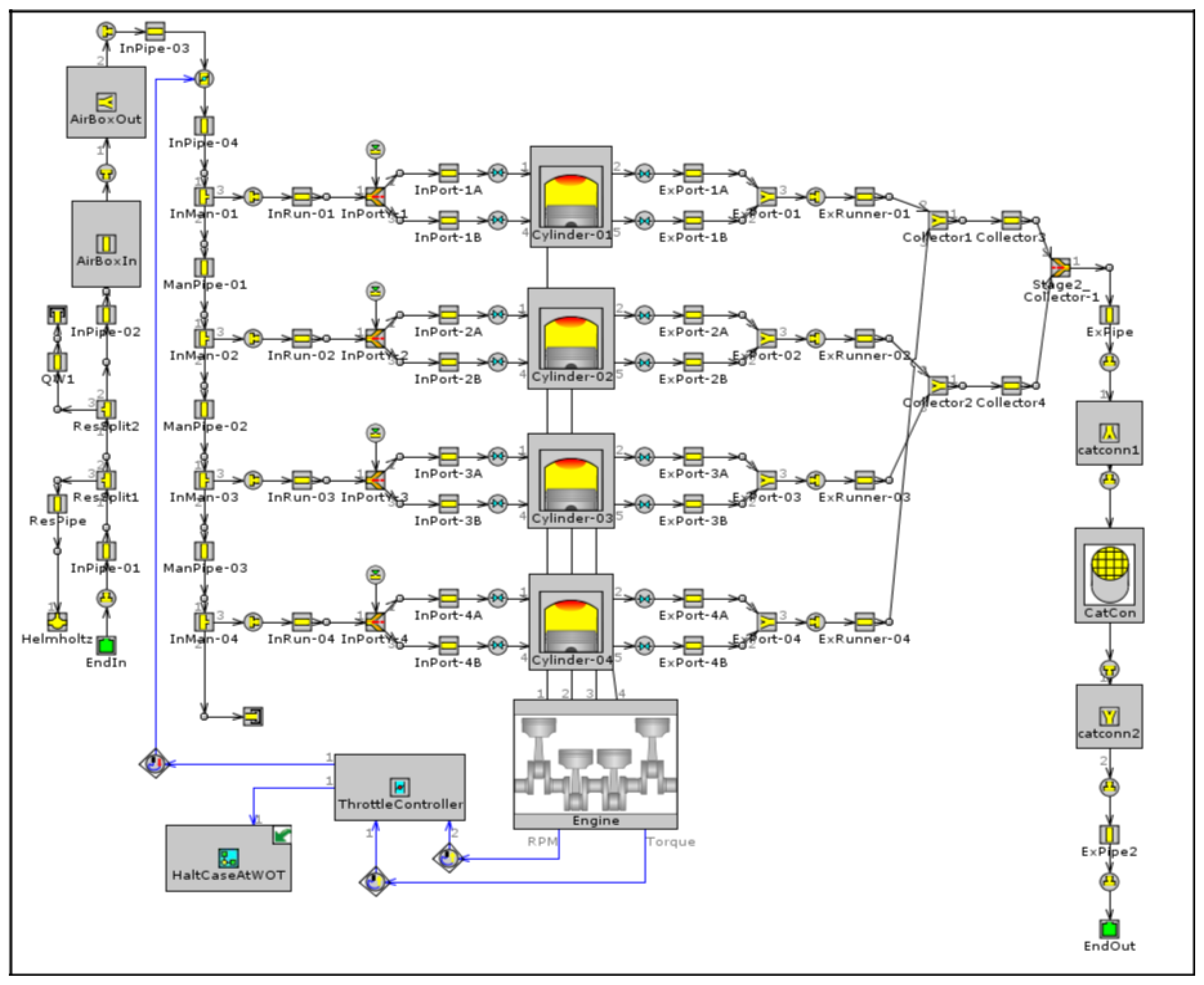



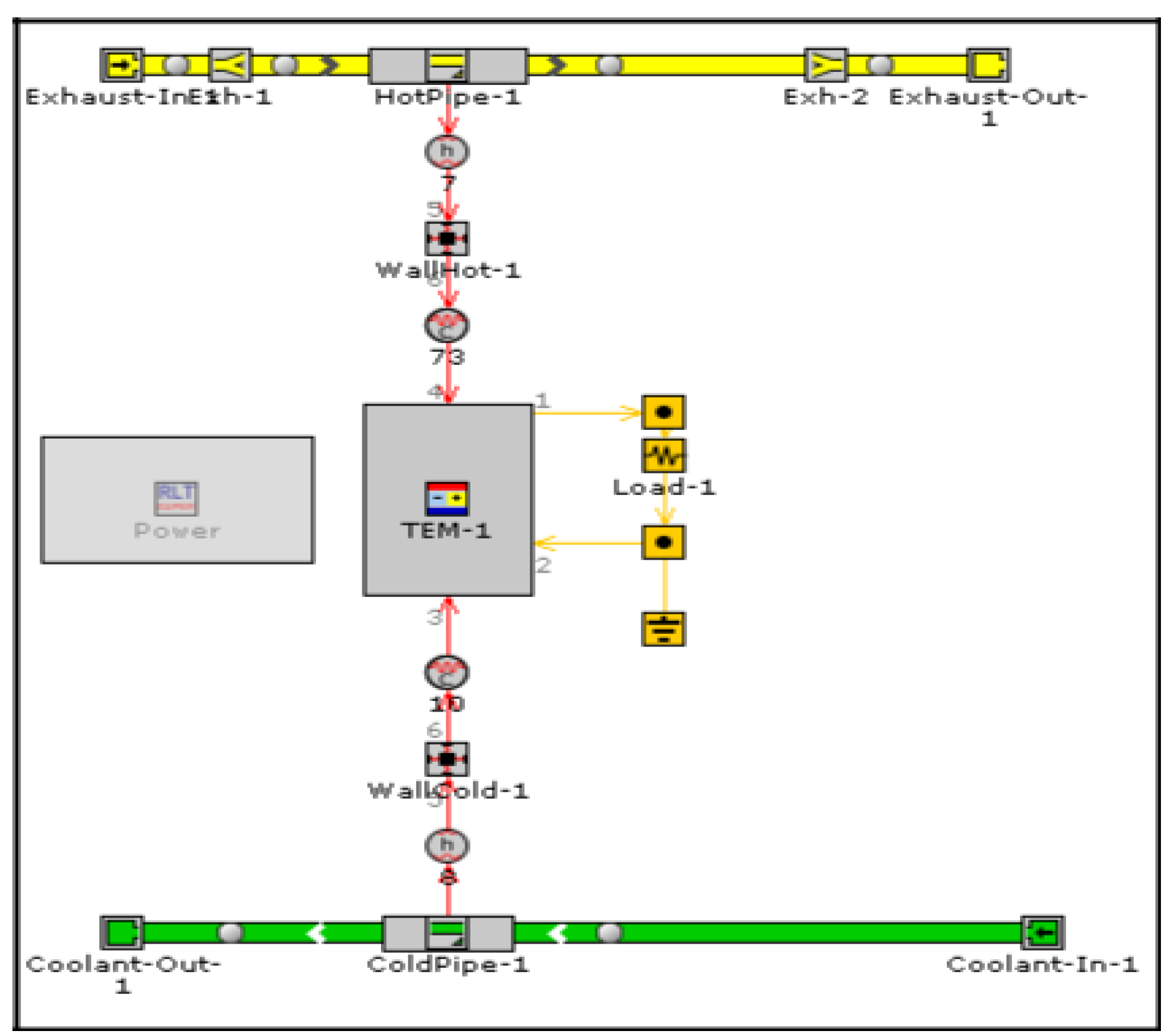


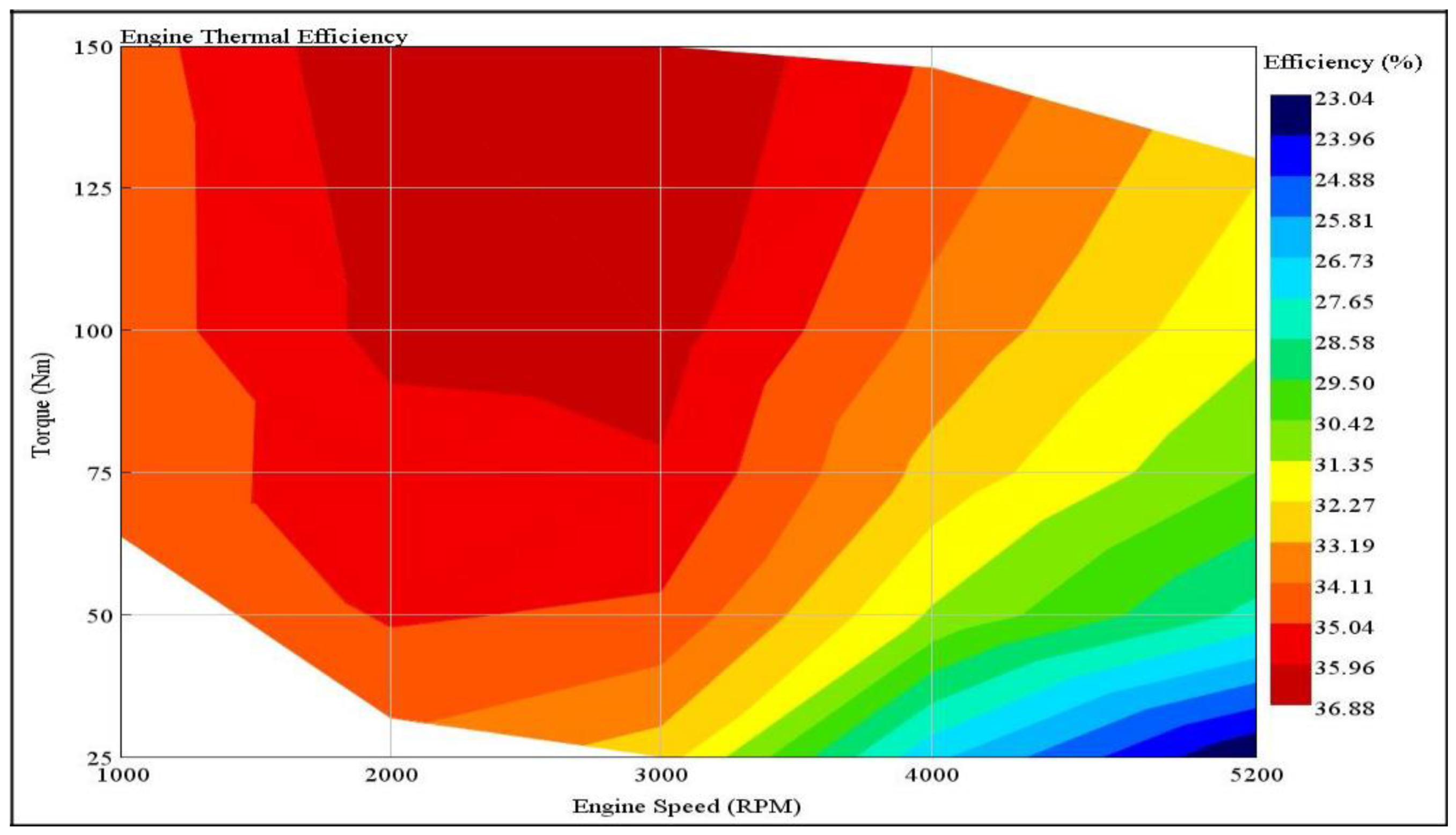
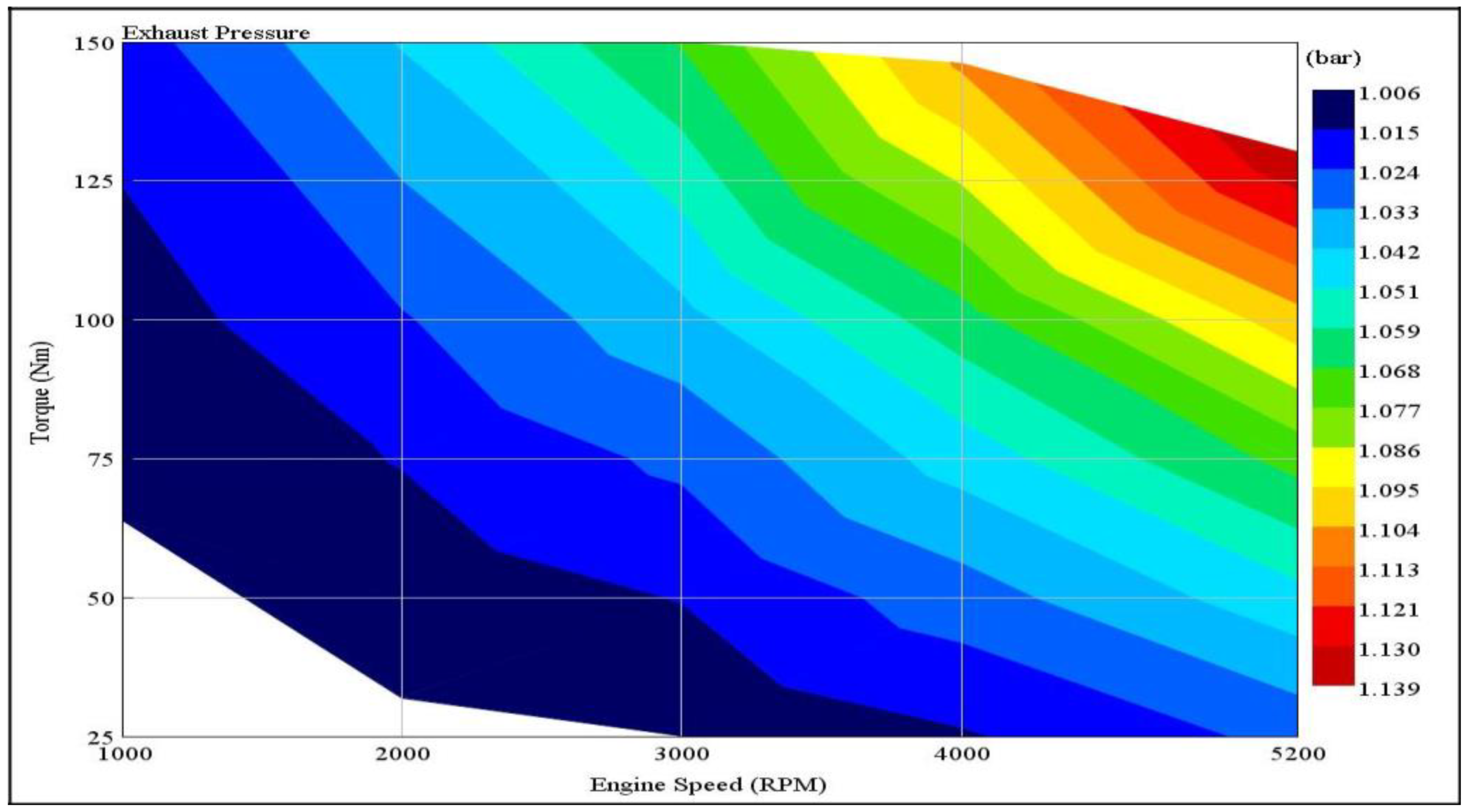
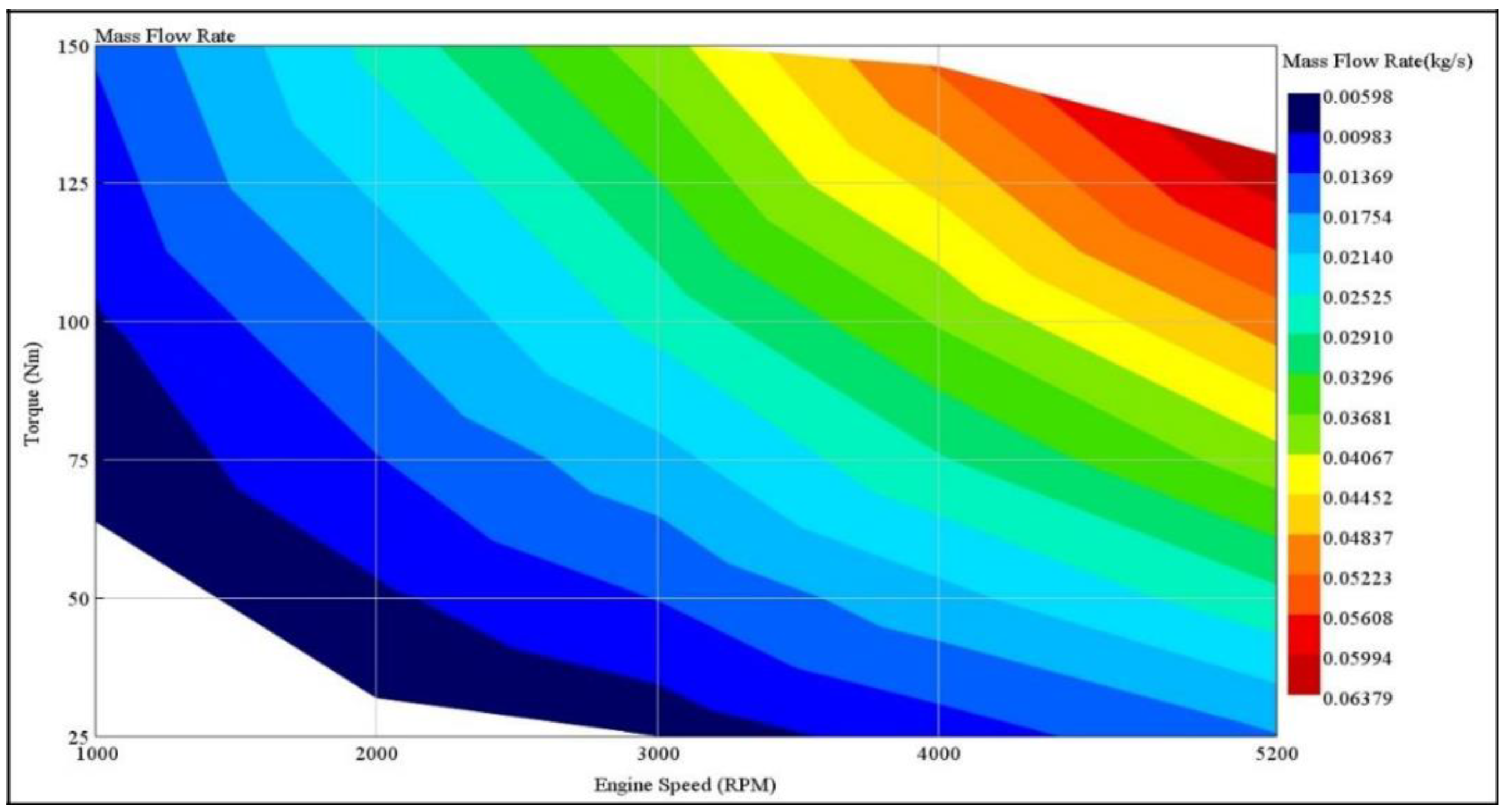
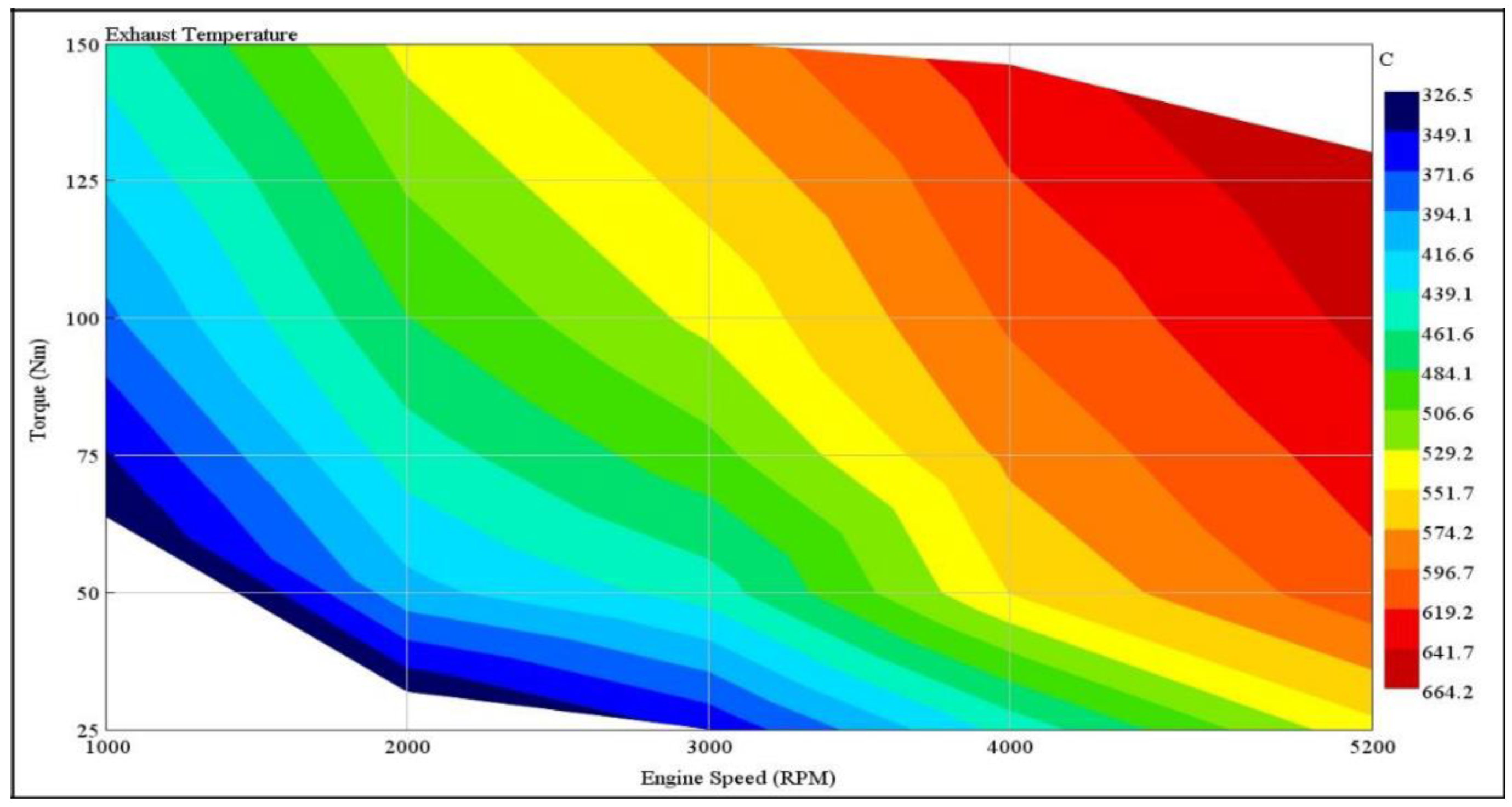


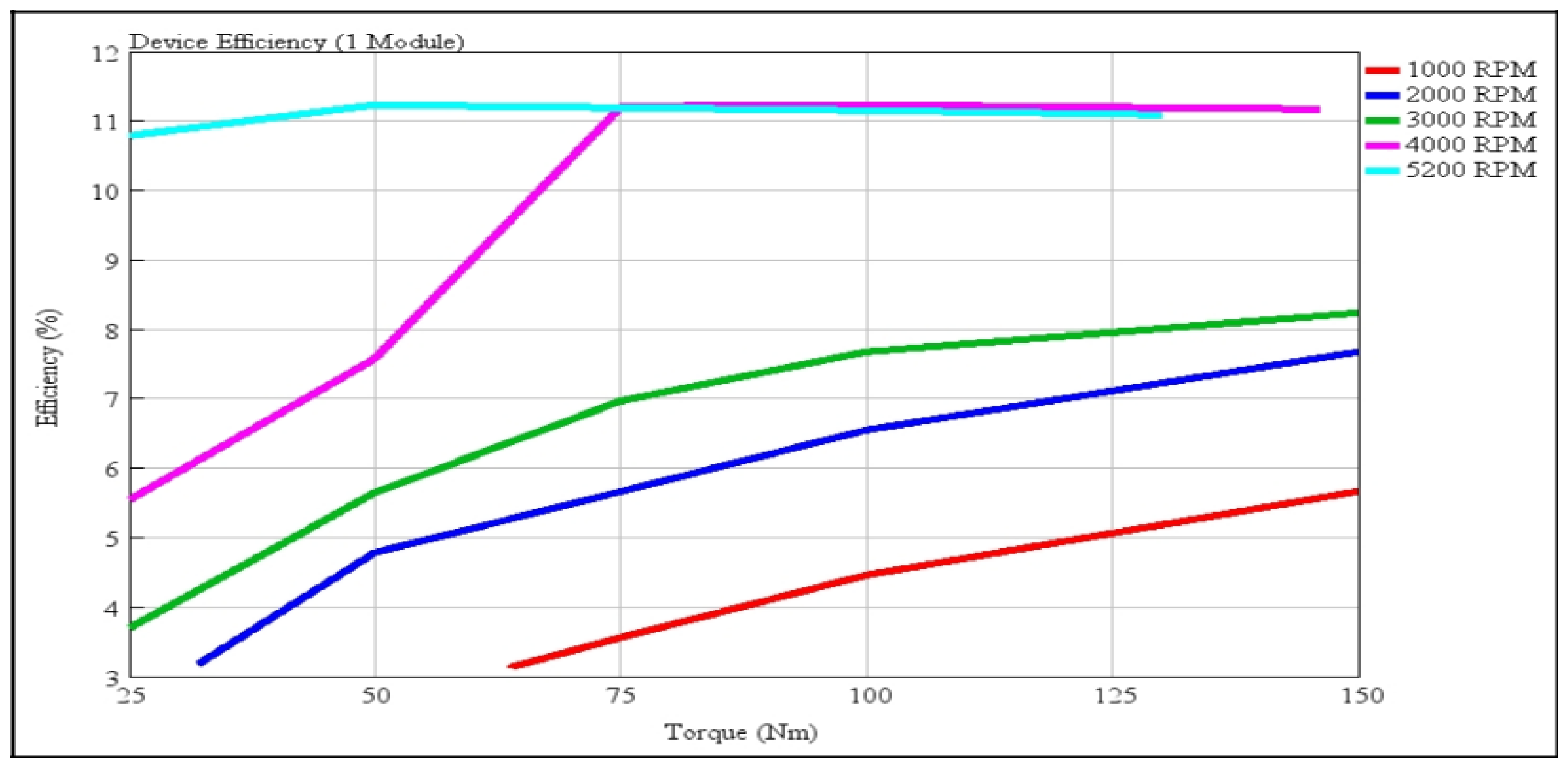
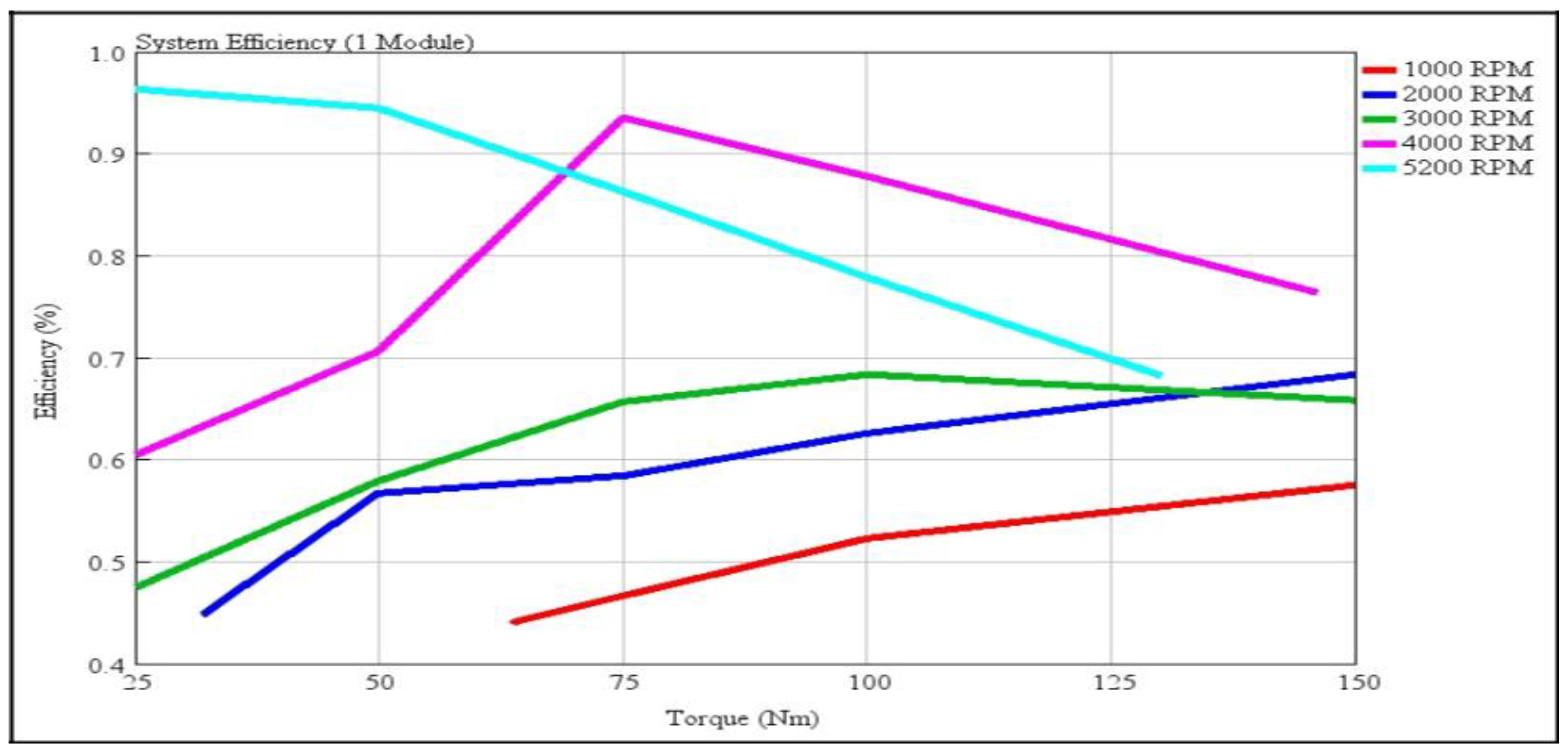

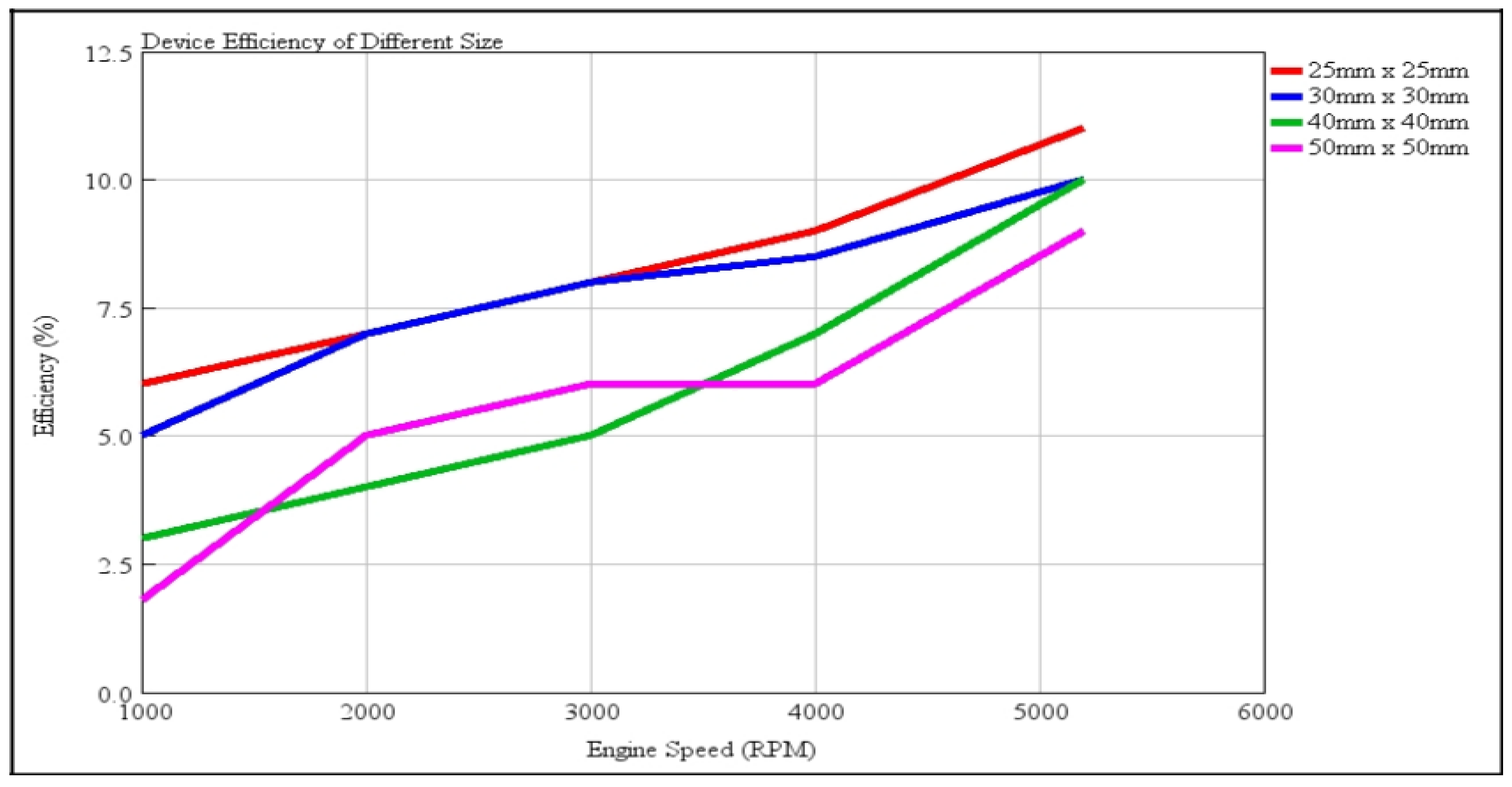
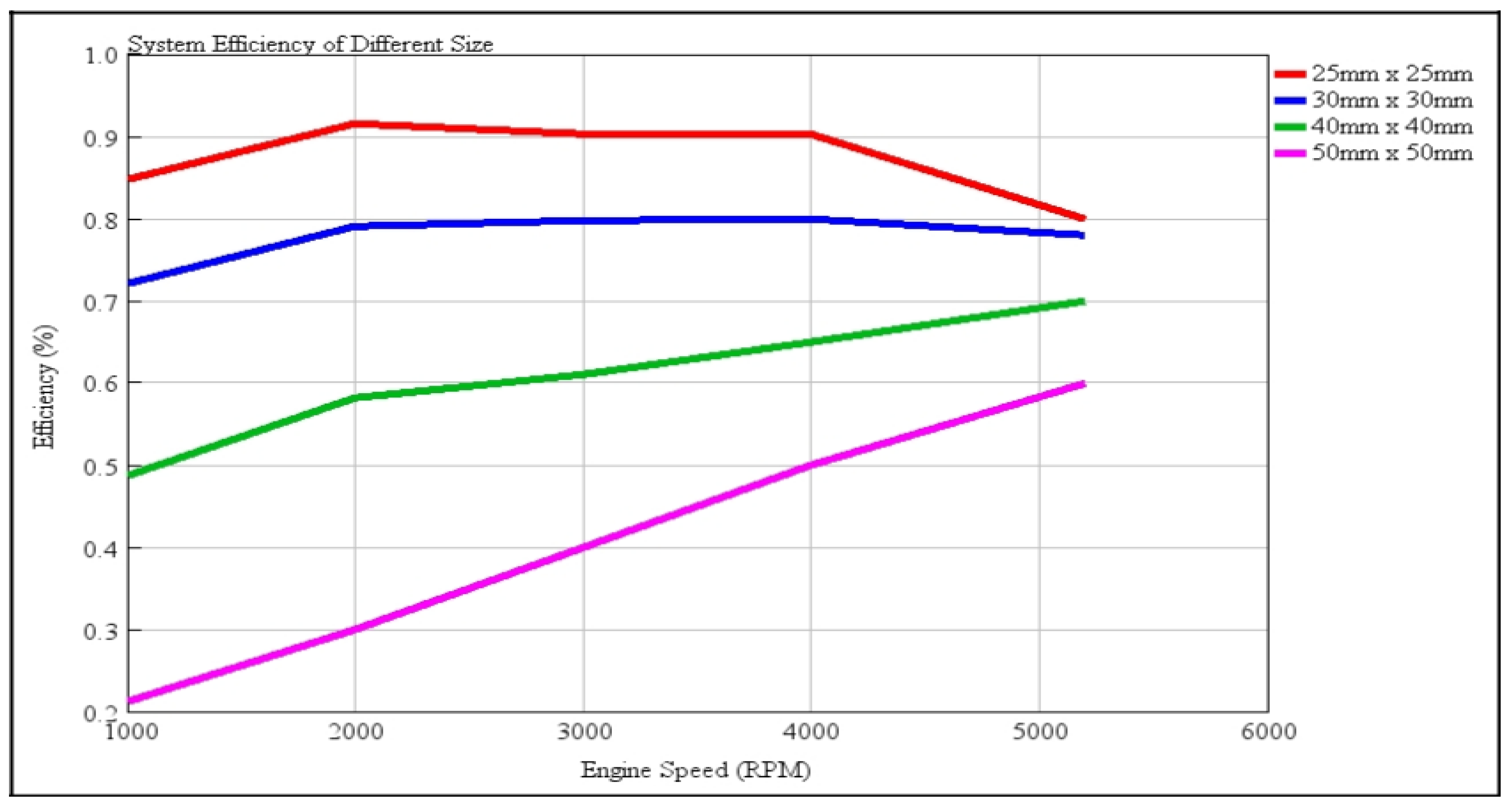

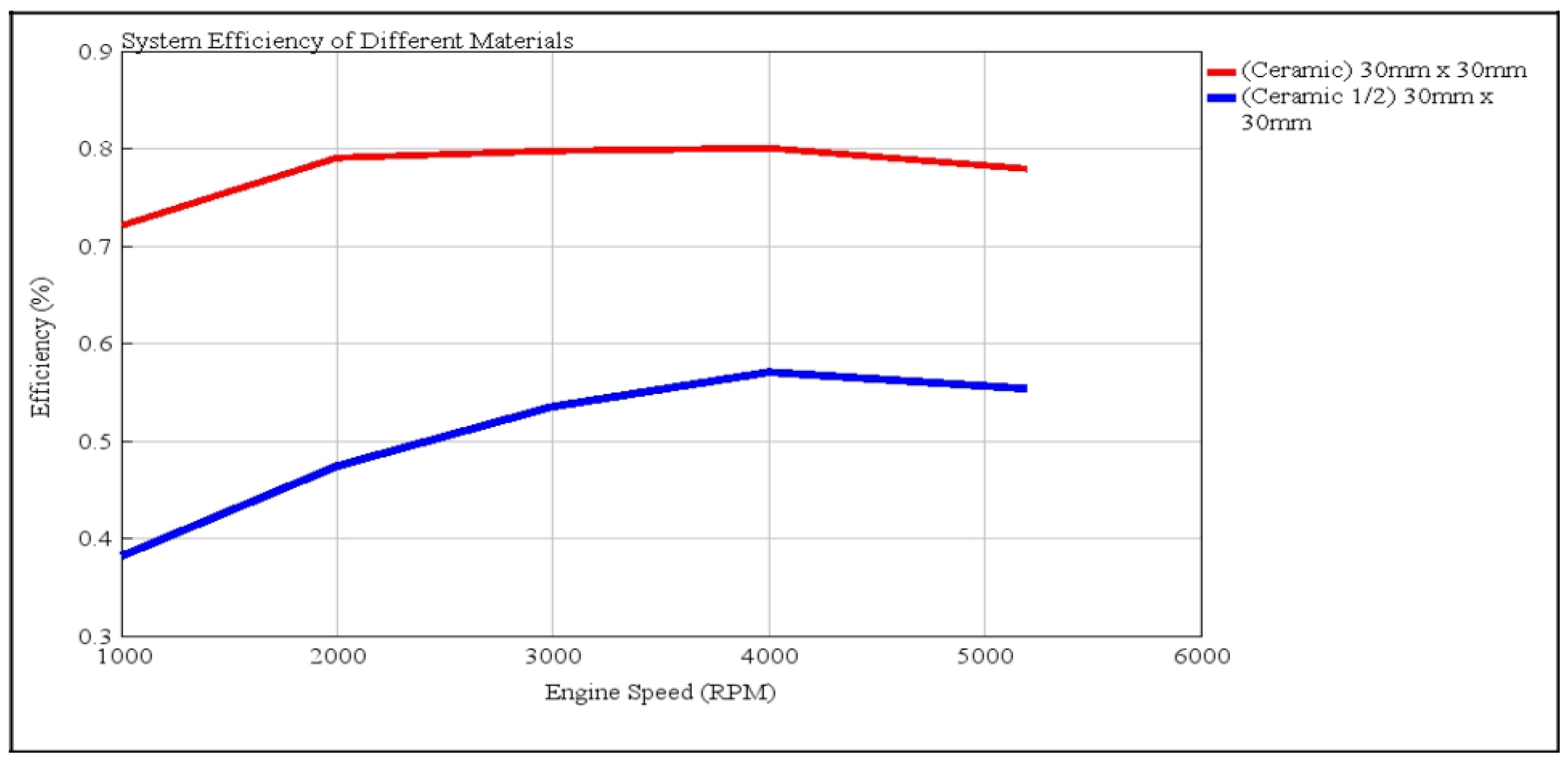
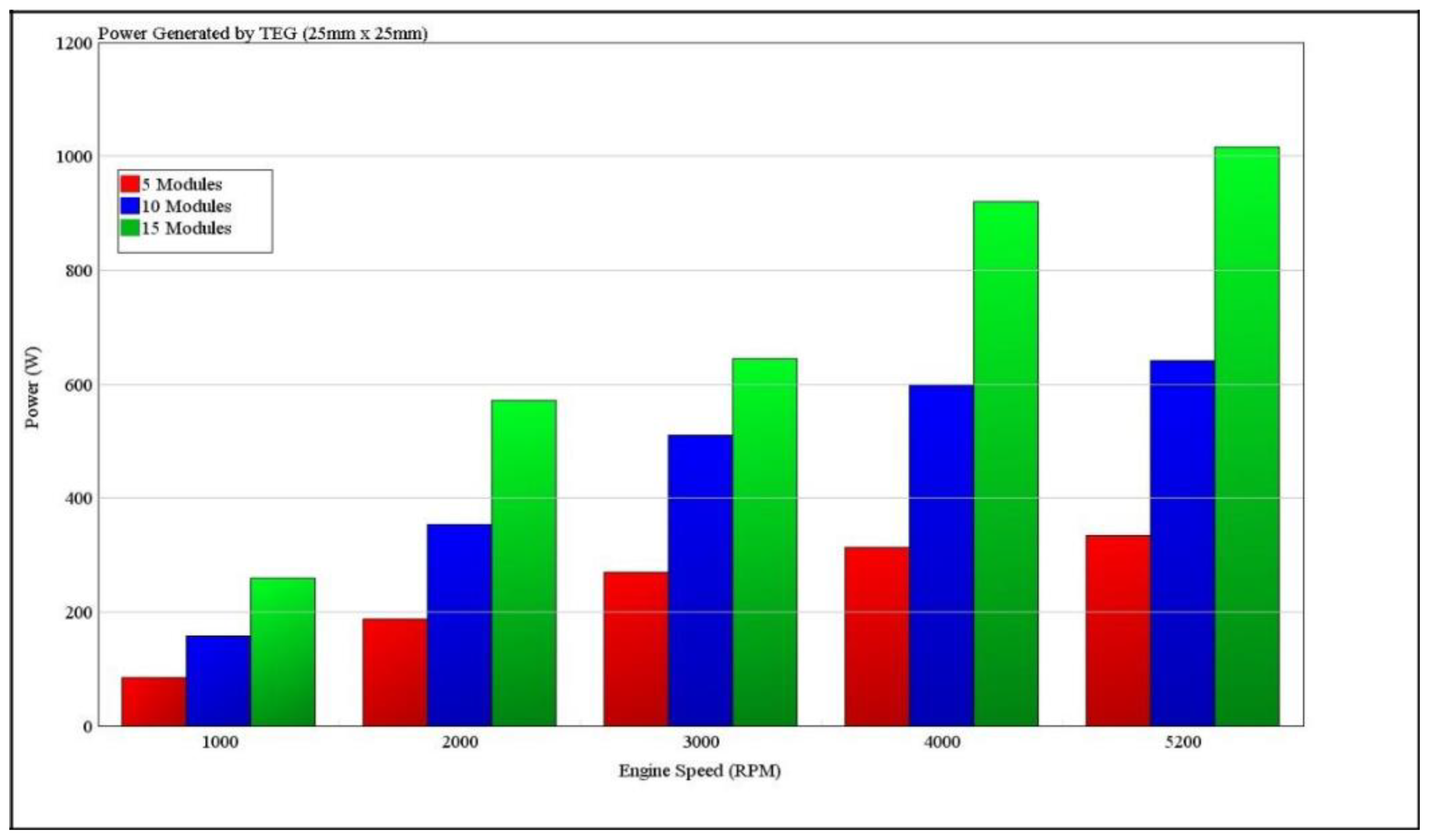
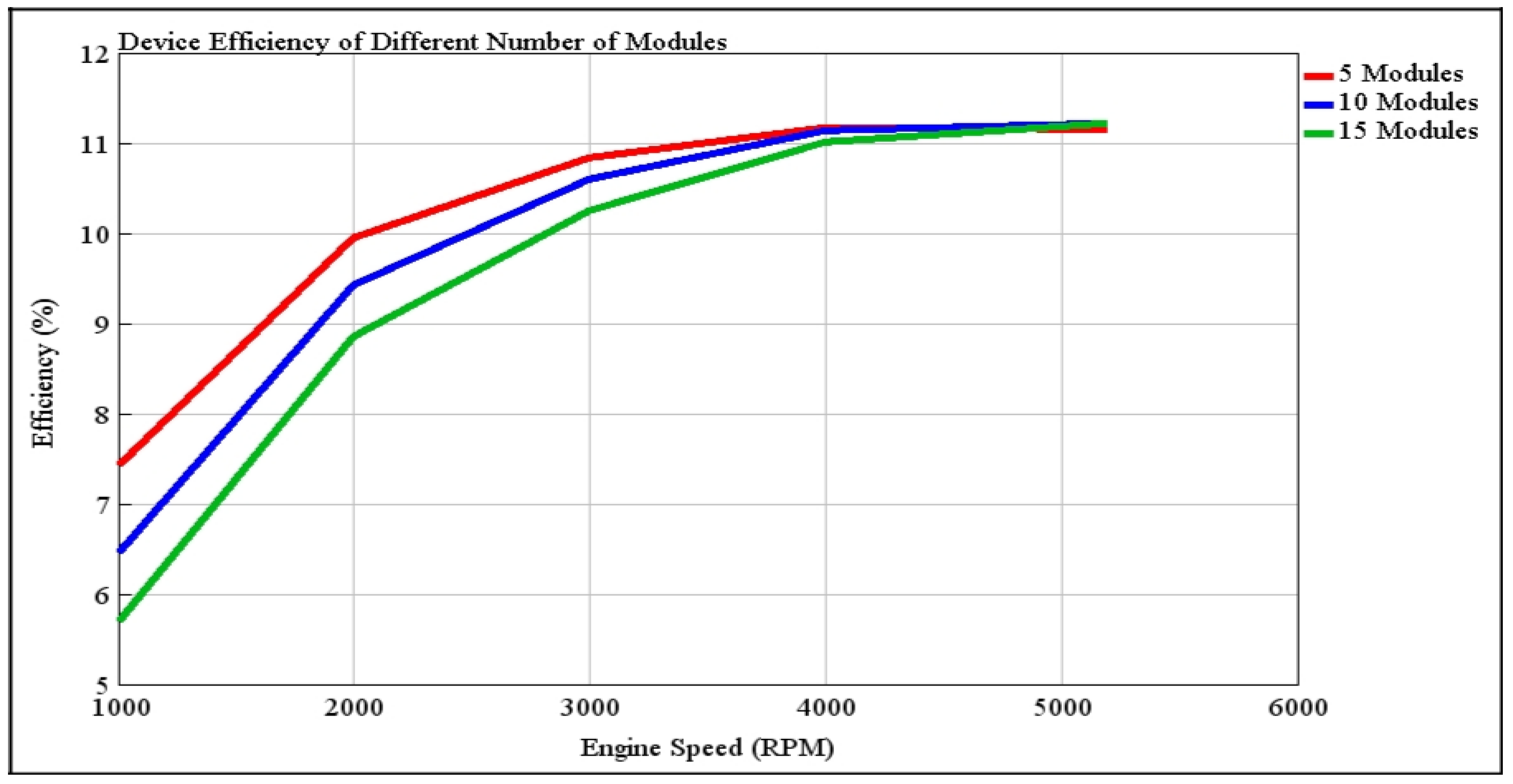


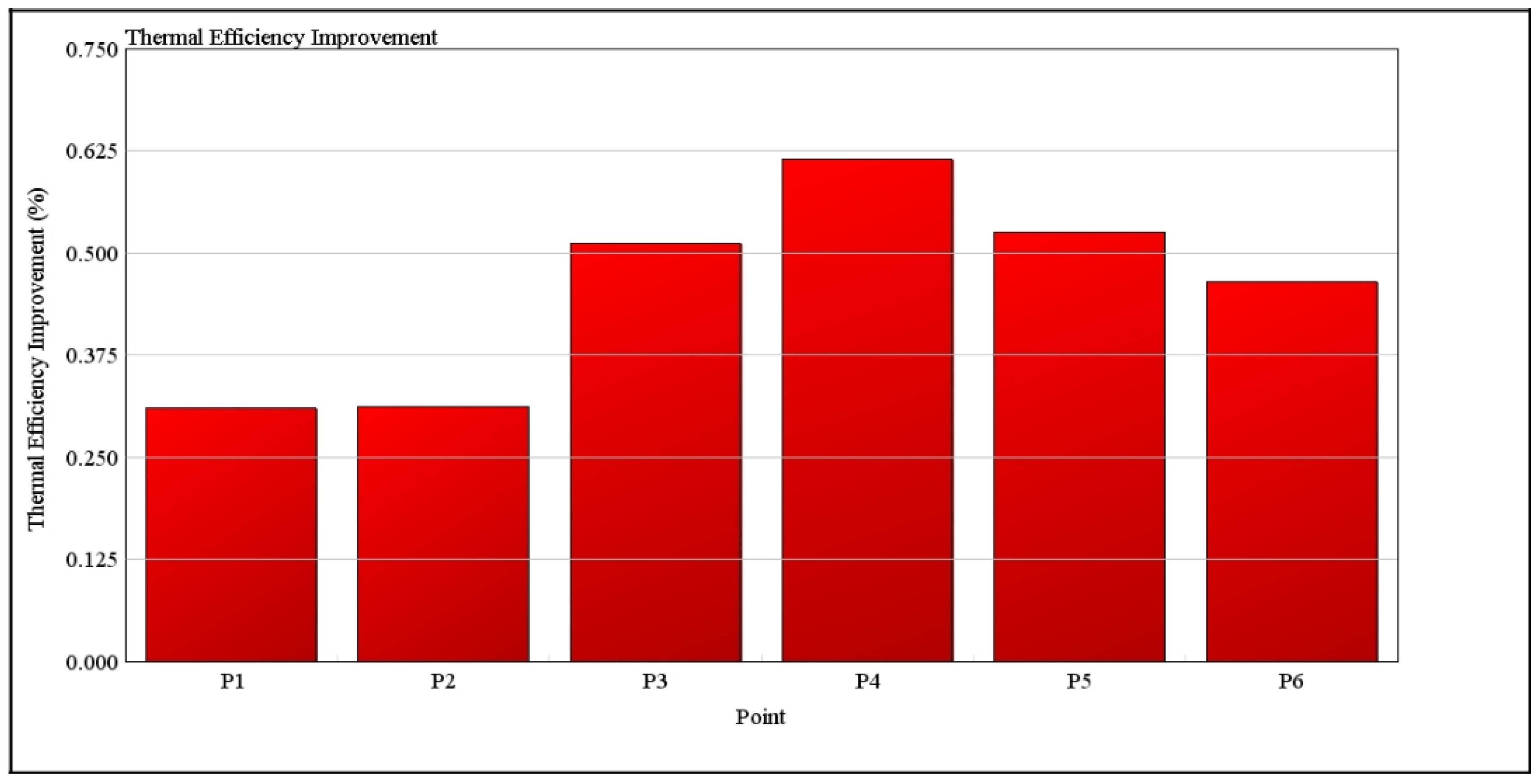
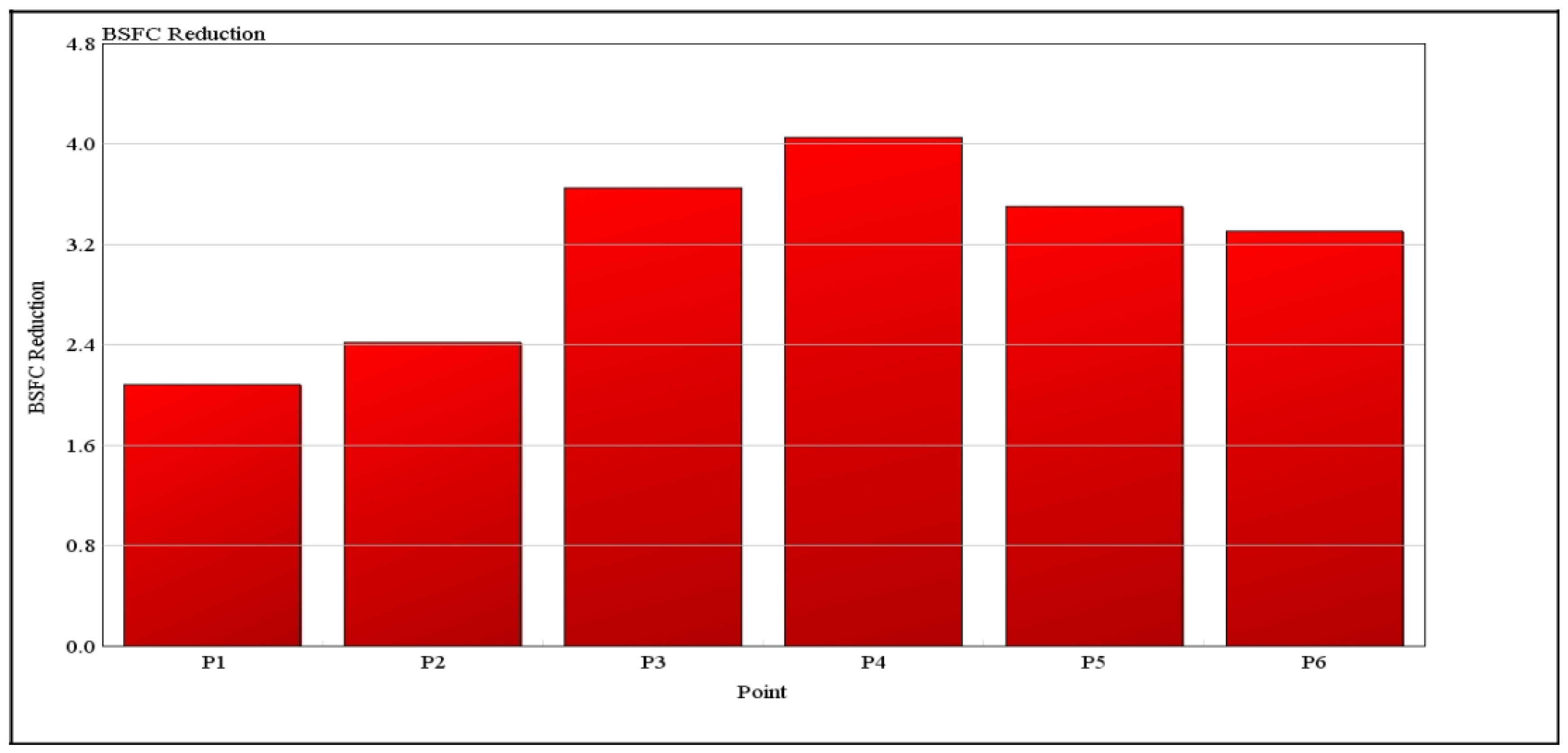

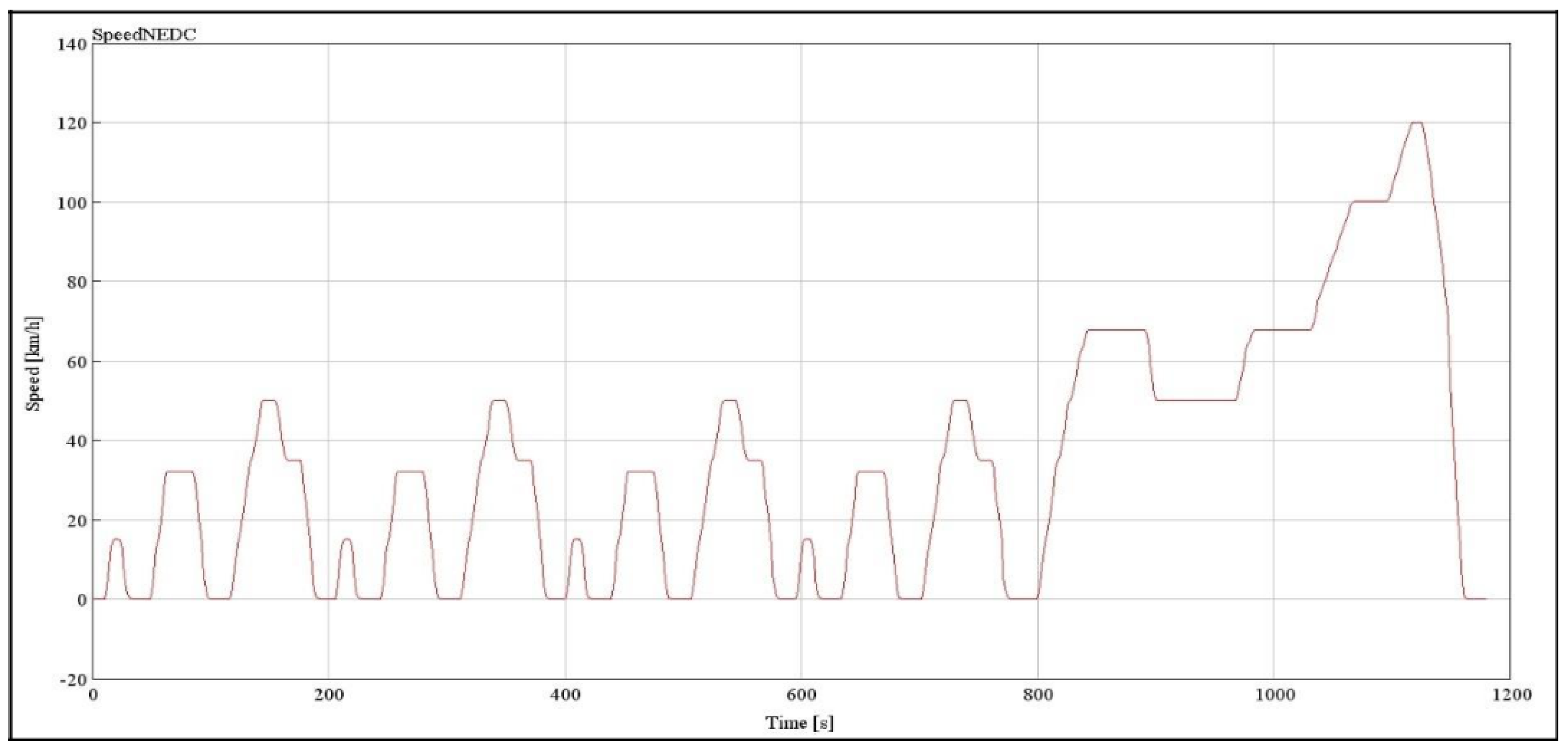

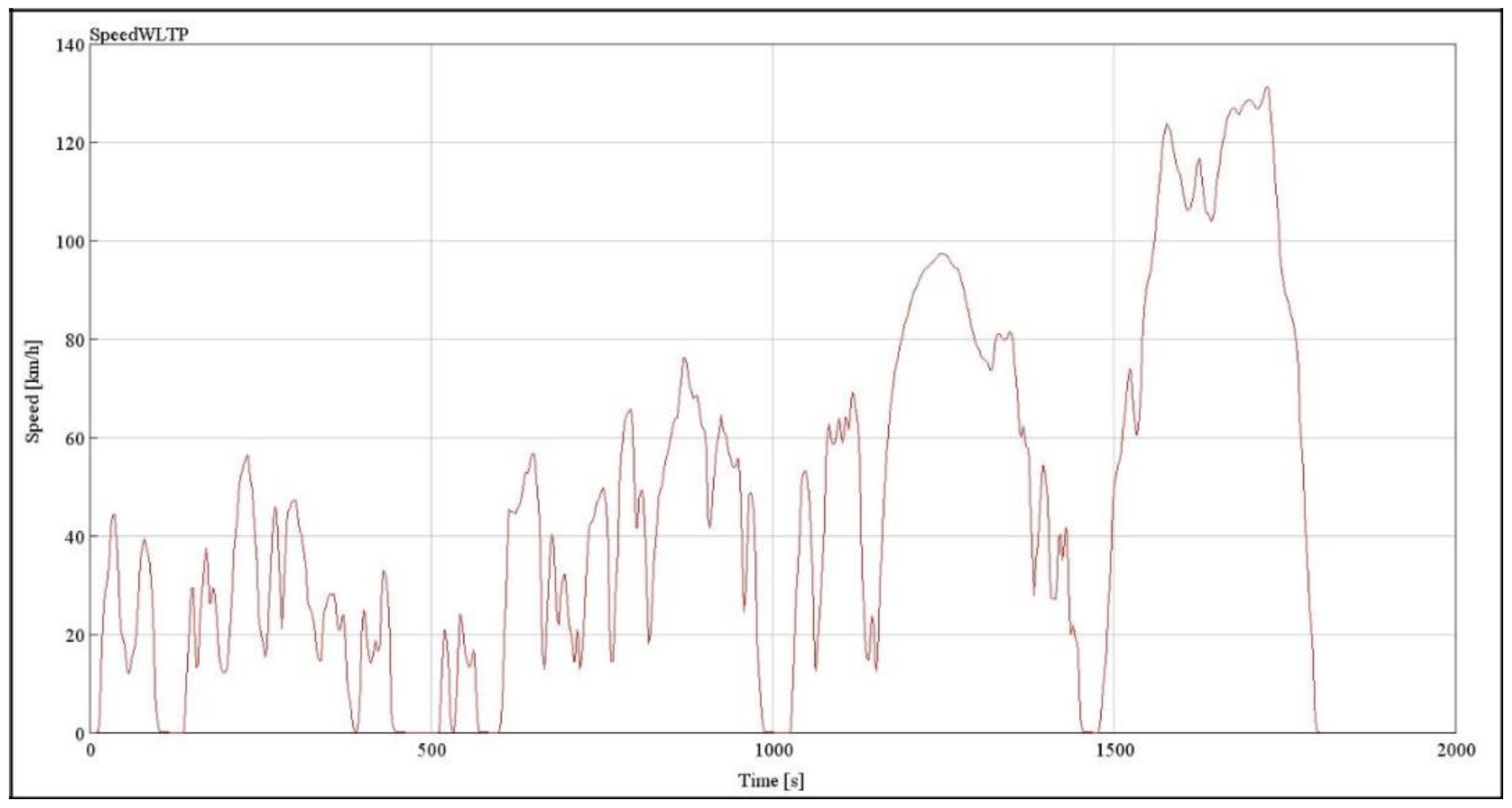

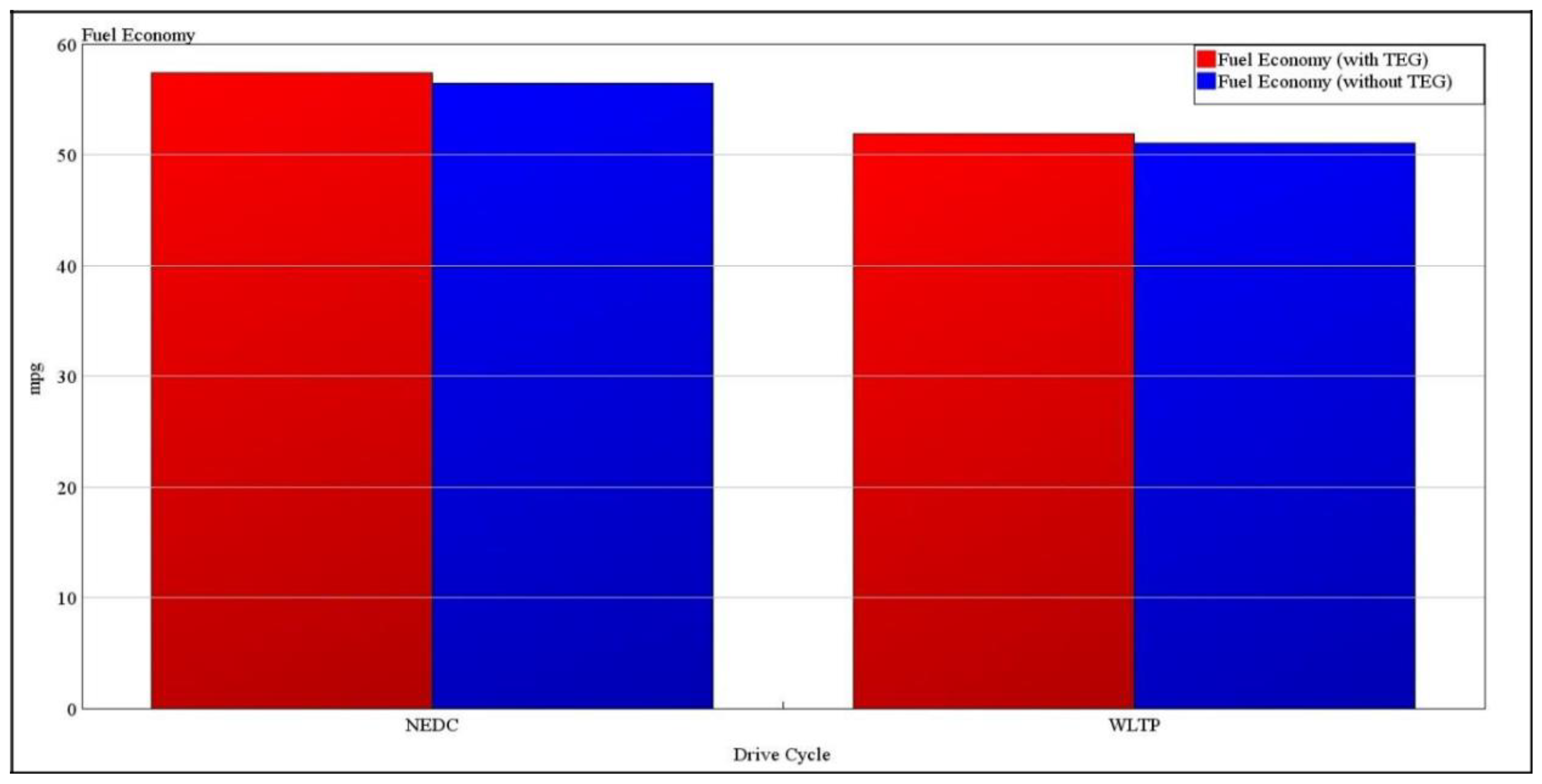
| Specifications | Value |
|---|---|
| Engine Type | 2 ZR-FXE (Atkinson Cycle) |
| Displacement | 1798 cc |
| Bore × stroke | 80.5 mm × 88.3 mm |
| Compression Ratio | 13.0:1 |
| Fuel | Gasoline |
| Max Power | 72 kW@5200 RPM |
| Max Torque | 142 Nm@4200 RPM |
| Test Data | Simulation | ||
|---|---|---|---|
| NEDC | WLTP | NEDC | WLTP |
| 65.7 mpg | 59.6–68.35 mpg | 56.4 mpg | 51.0 mpg |
| Size | Material |
|---|---|
| 25 mm × 25 mm | Ceramic |
| Operating Point | SI Engine | |
|---|---|---|
| RPM | Torque | |
| P1 | 1000 | 60 |
| P2 | 1000 | 80 |
| P3 | 2000 | 90 |
| P4 | 3000 | 100 |
| P5 | 4000 | 142 |
| P6 | 5200 | 130 |
| Operating Temperature Range | Power Generation Technology | System Cost ($/W) |
|---|---|---|
| Low (100 °C) | Geothermal | $4.14 |
| Half-Heusler Thermoelectric | $125.05 | |
| Chalcogenide Thermoelectric | $62.44 | |
| Medium (250 °C) | Organic Rankine Cycle | $4.00 |
| Solar Power | $3.60 | |
| Skutterudite Thermoelectric | $19.02 | |
| High (500 °C) | Nuclear | $5.34 |
| Coal | $2.84 | |
| Half-Heusler Thermoelectric | $4.48 | |
| Chalcogenide Thermoelectric | $5.06 |
© 2020 by the authors. Licensee MDPI, Basel, Switzerland. This article is an open access article distributed under the terms and conditions of the Creative Commons Attribution (CC BY) license (http://creativecommons.org/licenses/by/4.0/).
Share and Cite
Dzulkfli, M.S.b.; Pesyridis, A.; Gohil, D. Thermoelectric Generation in Hybrid Electric Vehicles. Energies 2020, 13, 3742. https://doi.org/10.3390/en13143742
Dzulkfli MSb, Pesyridis A, Gohil D. Thermoelectric Generation in Hybrid Electric Vehicles. Energies. 2020; 13(14):3742. https://doi.org/10.3390/en13143742
Chicago/Turabian StyleDzulkfli, Muhamad Shazrul bin, Apostolos Pesyridis, and Dhrumil Gohil. 2020. "Thermoelectric Generation in Hybrid Electric Vehicles" Energies 13, no. 14: 3742. https://doi.org/10.3390/en13143742
APA StyleDzulkfli, M. S. b., Pesyridis, A., & Gohil, D. (2020). Thermoelectric Generation in Hybrid Electric Vehicles. Energies, 13(14), 3742. https://doi.org/10.3390/en13143742






